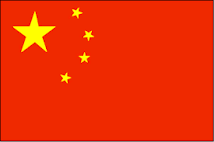Education in China
Water play at a kindergarten in Beijing. Photo©kidcyber
Before they begin primary school, Chinese children may go to kindergarten from the ages of 3-5 years.
A student learns to play a traditional Chinese musical instrument. Photo©kidcyber
Primary education is for 6-11 year old children. The school year starts in September and kids go to school for five days each week. They learn to write and read Chinese, study mathematics, science, painting, history and about the government of their country. Music and sport are also important subjects. At primary school parents pay a small fee for books and food, and for heating the classrooms. Children have 38 weeks of school each year and 13 weeks for vacation or holidays.
Beijing primary school students on an excursion to the zoo. Photo©kidcyber
After primary school there is secondary education, which is three more years at a junior middle school followed by senior middle school, also for three years.
Higher education at colleges and universities follows secondary school.
Parents must pay fees for students who attend senior middle schools, colleges and universities.
June is testing time
Each year in June there is a test for all students right across China to see which students can go to college or university. Those who pass well can go to the best colleges.
Having Fun!
Just like you, Chinese kids like to play. Chinese kids play soccer, badminton and jump rope. They play computer games and spend time with their families.
One popular game uses a jian zi (say: jee-an-tzee). It's a badminton shuttlecock with brightly coloured feathers and a weighted base. Player use their feet to keep the jian zi in the air for as long as possible, kicking it back and forth to each other.
Housing
In the large cities of China, most families live in small apartments. There are also modern single family homes in suburbs around the cities. Outside the cities the family home is often larger, but often, whole families, grandparents, their children and their grandchildren live together.
Transport
Trams and buses are double-deckers in Hong Kong © Getty images
Public buses, taxis, light rail and trains are the most common vehicles for transport around the cities of China.
Buses and trains link the major cites and towns.
Train subways
The first was built in 1956. Now the major Chinese cities - Beijing, Shanghai, Tianjin, Guangzhou, Hong Kong, Taipei, Shenzhen and Nanjing - all have city subways. Many more are planned.
High speed trains like this link many cities in China © Getty Images
Maglev trains
Maglev is short for 'magnetic levitation'
The Maglev train works by magnetic levitation, and has no wheels. It is pulled along above the metal rails by magnets fitted to both the train and the track. Maglev trains are the fastest passenger-carrying vehicles and have travelled at 400 kilometres per hour.
Maglev trains travel at very high speeds. © Getty Images
Travelling between cities is by bus, train or plane. Passenger boats are also popular in mountainous places where it is easier to travel along rivers and canals.
The Grand Canal is the world’s longest canal at 1,794 km and links cities between Beijing and Hangzhou. Five of China's main rivers flow into the Canal.
Rickshaws, once common, are now mainly for tourists. Photo©kidcyber
Many people ride bicycles, but are becoming less popular in big cities. Photo©kidcyber
It’s a good idea to get information from more than one source!
Read about schools in China
Read about traditional housing in China long ago
https://savvyleo.com/world-history/ancient-china/houses/










